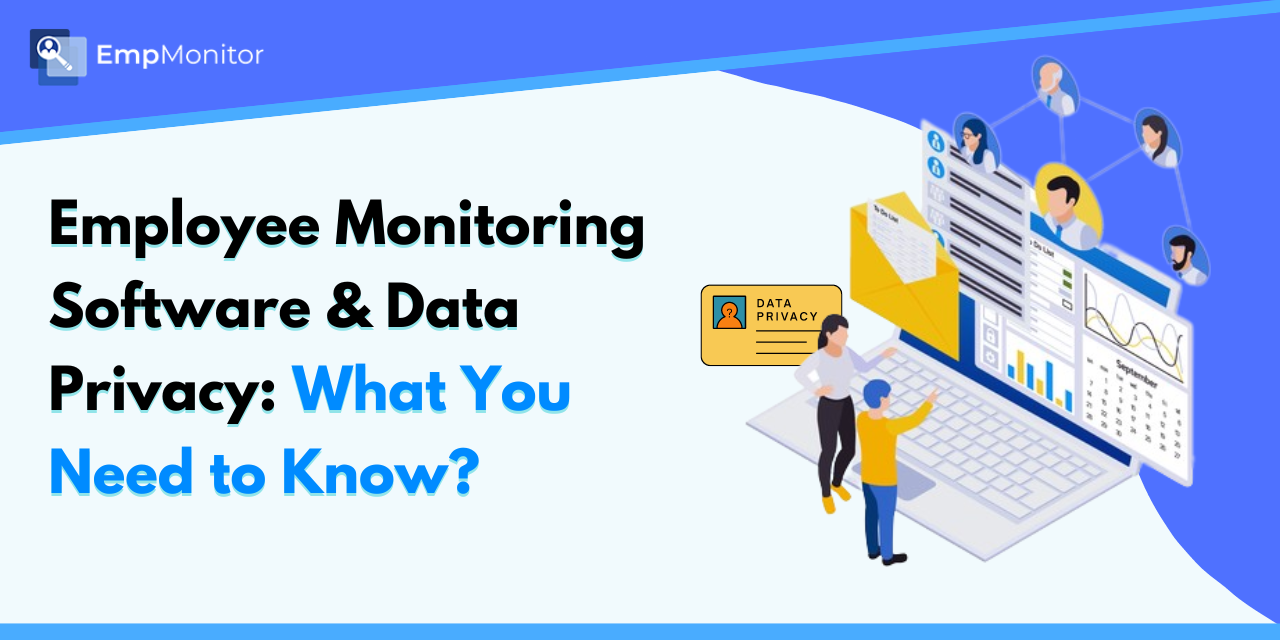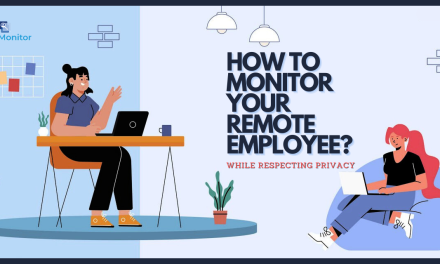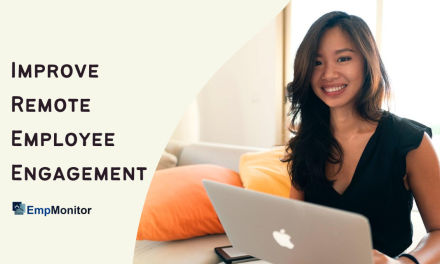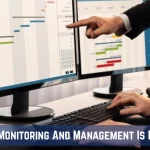In the modern era of remote work, digital connectivity, and heightened security concerns, employee monitoring software has emerged as a powerful tool for businesses. This allows employers to track and monitor various aspects of their employees’ work activities, providing valuable insights into productivity, performance, and compliance.
As organizations strive to optimize operations, ensure data security, and maintain high levels of productivity, the relevance of monitoring software continues to grow. It encompasses a range of features and capabilities, including tracking internet usage, monitoring email communications, recording keystrokes, & analyzing computer application usage.
By collecting and analyzing this data, employers gain a deeper understanding of how employees spend their time, identify areas for improvement, and mitigate potential risks. It empowers organizations to make data-driven decisions, streamline processes, and enhance overall efficiency.
However, while the benefits of employee monitoring software are undeniable, it is essential to strike a delicate balance between monitoring and respecting employees’ right to privacy.
As data privacy considerations are paramount in ensuring that monitoring practices remain ethical, legal, and respectful of individual privacy rights. By approaching employee monitoring with a careful and thoughtful approach to data privacy, businesses can foster a culture of trust, compliance, and productivity in today’s evolving workplace landscape.
Tune in to the Audio Podcast to Learn All About Employee Monitoring Software
What is Employee Monitoring Software?
It refers to technology tools and systems used by organizations to track and monitor the activities and behaviour of employees at the workplace. The primary purpose of such software is to gather data and insights on employee productivity, adherence to company policies, and potential security risks.
One such employee monitoring software is EmpMonitor which can help you manage all your employee management needs for a productive business.
With EmpMonitor software, you can monitor your workforce & manage your remote teams effectively. You can also use the features offered by this software- time-tracking, productivity management, project management, leave management and performance monitoring.
With the below-stated example, you will get to learn how you can track employee productivity using this employee monitoring software.
- Let’s say there is Employee A – For which you want to know the productivity status for the first few hours of the day.
Here, the company has a total office time so far of 1 hr 36 min, out of which this employee has worked for an active time of 1 hour 21 minutes, has an idle time of 15 min and was 16.97% productive.
- Let’s assume there is Employee B- For which the company wishes to know the employee productivity for an entire month.
Here the total office time for a month was 109 hours, out of which this employee has an active time of about 81 hours, out of which productive time was 80 hours, 46 min was neutral time, while the remaining 28 hours fall under idle time. Therefore, this employee has 66% productivity for the particular month.
This is how you can analyse your employee productivity for today, yesterday, for a week, for the last 30 days, this month, and the previous month & also for a custom range using employee monitoring software.
As a result, You can ensure that your remote employees stay productive and driven towards company business goals. Now let’s understand how employee monitoring software ensures data privacy in business.
How Can Employee Monitoring Software Ensure Data Privacy?

-
Detecting and Preventing Insider Threats
Identifying insider threats poses a significant risk to data privacy within businesses. Employee monitoring software can help you identify hidden activities by employees, such as attempting to access sensitive data without proper access or sharing confidential information with 3rd parties.
When you promptly detect such behaviour- you can take action and prevent data breaches & safeguard sensitive information.
-
Enforcing Compliance with Data Protection Regulations
The PC Monitoring Software can track and monitor data handling processes, identify potential vulnerabilities, and help enforce privacy policies and procedures within the business! By monitoring employee action, you can mitigate the risk of accidental or intentional data breaches that could result in legal and financial consequences.
Also, ensure data compliance with General Data Protection Regulation (GDPR) and the California Consumer Privacy Act (CCPA) to enforce data protection.
-
Identifying Security Weaknesses and Vulnerabilities
You can identify security weaknesses in a company’s IT infrastructure and systems using such software. By monitoring employee activities, businesses can detect unusual or suspicious behaviour that may indicate a remote work security breach or potential vulnerability.
For example– If an employee tries to access the restricted zone, install a prohibited application or try to make unauthorised use, then this employee monitoring tool can send out information to the IT team to fix the issue and strengthen the company’s overall data security.
-
Promoting a Culture of Data Privacy Awareness
Having data privacy awareness in the company can send out a strong message to employees about the company’s commitment towards data privacy. Making employees aware of their responsibilities regarding data protection and making them aware of the consequences of mishandling sensitive information that will serve the company in the long run.
It is important to note that employee monitoring software can contribute to preventing data privacy breaches & implementation with proper safeguards and transparency to address concerns related to employee privacy and trust. Businesses should ensure monitoring practices comply with applicable laws and regulations.
Also, communicate these monitoring policies clearly to employees to establish mechanisms for addressing employee concerns and grievances.
Benefits of Having Employee Monitoring Software For Businesses
With Empmonitor you can enjoy several benefits for businesses like enhanced productivity, security, and compliance. Let’s learn all the benefits in detail-
-
Increased Productivity & Efficiency
Monitoring software provides valuable insights into employees’ work patterns, enabling organizations to identify inefficiencies, streamline processes, and optimize resource allocation. It helps you monitor employee productivity and address offline hours, and time-wasting activities to boost overall productivity.
-
Identification of security threats and risks
By monitoring internet usage, email communications, and application usage, businesses can detect and prevent potential security breaches, unauthorized access, or the misuse of sensitive data. This proactive approach enhances data security and reduces the risk of internal and external threats.
-
Compliance with regulations and policies
PC monitoring software assists you in ensuring compliance with company policies, industry regulations, and legal requirements. It helps you detect policy violations, such as unauthorized software installations, inappropriate internet usage, or non-compliance with data protection regulations.
-
Performance Evaluation & Feedback
The data collected through monitoring software provides objective metrics for evaluating employee performance. It enables fair and accurate performance assessments. It helps identify improvement areas and recognise high-performing individuals or teams in the company.
However, it is crucial to implement monitoring software with transparency, open communication, and a balanced approach to respect employee privacy, foster trust, and ensure compliance with data privacy regulations and labour laws.
Read Blog
Revolutionize Workforce With The Ultimate Time Tracking Software For Employees
Conclusion
In conclusion, having an employee internet monitoring software like Empmonitor can help you solve the complex intersection between organizational needs and individual privacy rights. This software solution offers benefits such as increased productivity, enhanced security, and regulatory compliance. Therefore, it’s crucial to approach its implementation with careful consideration for data privacy.
To strike a balance, organizations must prioritize transparency and communication with employees. Clearly outlining monitoring policies, obtaining informed consent, and providing avenues for employee feedback and concerns can foster trust and mitigate privacy-related risks.
Additionally, organizations should adhere to relevant data privacy laws and regulations, such as the GDPR or CCPA, ensuring that monitoring practices comply with legal requirements and respect employee rights.
Responsible use of monitoring software will reduce the risk of data collection and retention by implementing robust data security and focusing on specific monitoring needs that align with organizational objectives. Getting the same aligned will reduce privacy concerns and reap the benefits of monitoring tools.
Ultimately, organizations should strive to maintain a culture that respects privacy while leveraging employee monitoring software effectively.
Having an open dialogue, employee involvement in policy development, and periodic review of monitoring practices will lead to better formulation and implementation of policy. By striking the right balance, organizations can promote a productive and secure work environment, safeguarding employee privacy, trust, and well-being.












